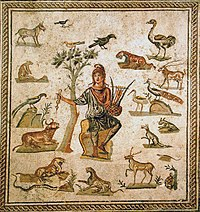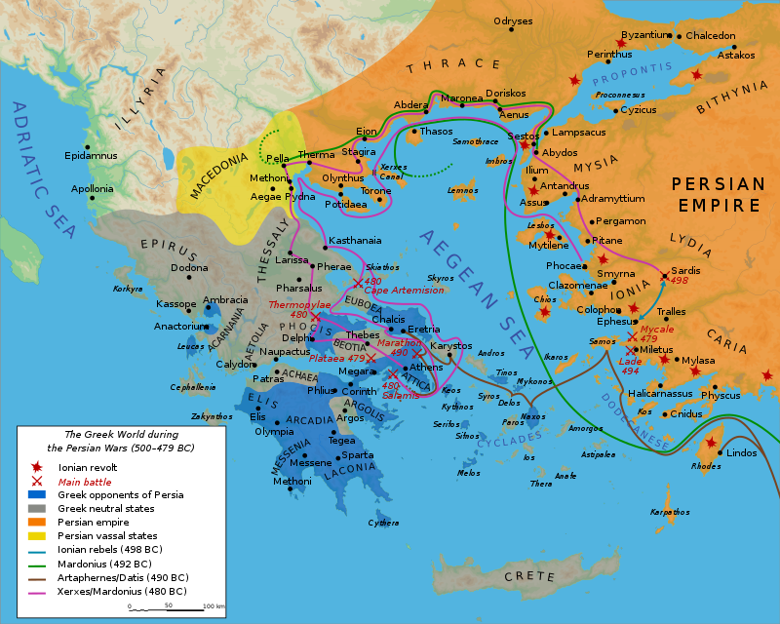6th century BCE until the 4th century CE

Orphism (Ancient Greek: Ὀρφικά, romanized: Orphiká)
A set of religious beliefs and practices originating in the ancient Greek and Hellenistic world, associated with literature ascribed to the mythical poet Orpheus, who descended into the Greek underworld and returned. This type of journey is called a katabasis and is the basis of several hero worships and journeys. Orphics revered Dionysus (who once descended into the Underworld and returned) and Persephone (who annually descended into the Underworld for a season and then returned).
Orphics believed that they would, after death, spend eternity alongside Orpheus and other heroes. The uninitiated (Ancient Greek: ἀμύητος, romanized: amúētos), they believed, would be reincarnated indefinitely.
The Dionysian Mysteries
Religious rituals and ceremonies associated with the worship of the Greek god Dionysus. Dionysus, also known as Bacchus, was the god of wine, fertility, and ecstasy. The mysteries were performed by initiates who sought a direct and personal experience of the divine through participation in the Dionysian cult. The central ritual of the Dionysian mysteries was the teletē, which was a sacred initiation ceremony. During the teletē, initiates underwent a transformative experience aimed at achieving communion with the divine and gaining access to hidden knowledge and spiritual enlightenment. The details of the teletē varied, as the mysteries were celebrated in different regions and at different times throughout ancient Greece.
The teletē often involved a series of purification rituals, including fasting, ritual baths, and the wearing of special garments. Initiates would then participate in a procession, accompanied by music, dancing, and revelry. The use of wine was prominent in these rituals, as it was believed to be a sacred substance that facilitated a closer connection with Dionysus. The climax of the teletē was a rite of passage known as the communio, where initiates would engage in ecstatic practices, such as frenzied dancing, singing, and shouting. It was believed that during these ecstatic states, the initiates would transcend their ordinary selves and become united with the divine presence of Dionysus. It was thought to be a transformative experience that granted profound insights, spiritual liberation, and a sense of personal rebirth.
The Dionysian mysteries were celebrated in various forms throughout the ancient Greek world, and they attracted a diverse range of participants, including both men and women. These mysteries were seen as a way to connect with the forces of nature, explore the boundaries of human existence, and experience a sense of liberation and transcendence. It's worth noting that our knowledge of the Dionysian mysteries is limited, as the rituals were shrouded in secrecy, and few detailed descriptions have survived. Much of what we know about these mysteries comes from fragmentary accounts and references in ancient texts, as well as archaeological evidence.
Greco-Persian Wars based on the writings of Herodotus.
The Greco-Persian Wars (also often called the Persian Wars) were a series of conflicts between the Achaemenid Empire and Greek city-states that started in 499 BC and lasted until 449 BC. The collision between the fractious political world of the Greeks and the enormous empire of the Persians began when Cyrus the Great conquered the Greek-inhabited region of Ionia in 547 BC. Struggling to control the independent-minded cities of Ionia, the Persians appointed tyrants to rule each of them. This would prove to be the source of much trouble for the Greeks and Persians alike.

Throughout the 470s BC, the Delian League campaigned in Thrace and the Aegean to remove the remaining Persian garrisons from the region, primarily under the command of the Athenian politician Cimon. Towards the end of the 460s BC, the Athenians took the ambitious decision to support a revolt in the Egyptian satrapy of the Persian empire. Although the Greek task force achieved initial successes, they were unable to capture the Persian garrison in Memphis, despite a three-year long siege.
The First Peloponnesian War (460–445 BC) was fought between Sparta as the leaders of the Peloponnesian League and Sparta's other allies, most notably Thebes, and the Delian League led by Athens with support from Argos.
In 404 BC when Cyrus the Younger attempted to seize the Persian throne, he recruited 13,000 Greek mercenaries from all over the Greek world, of which Sparta sent 700–800, believing they were following the terms of the defence pact and unaware of the army's true purpose. After the failure of Cyrus, Persia tried to regain control of the Ionian city-states, which had rebelled during the conflict. The Ionians refused to capitulate and called upon Sparta for assistance, which she provided, in 396–395 BC. Athens, however, sided with the Persians, which led in turn to another large-scale conflict in Greece, the Corinthian War.
The Corinthian War (395–387 BC) was a conflict in ancient Greece which pitted Sparta against a coalition of city-states comprising Thebes, Athens, Corinth and Argos,
In 334 BC, Alexander III of Macedon "Alexander the Great" invaded the Achaemenid Persian Empire and began a series of campaigns that lasted for 10 years. Following his conquest of Asia Minor, Alexander broke the power of Achaemenid Persia in a series of decisive battles, including those at Issus and Gaugamela; he subsequently overthrew Darius III and conquered the Achaemenid Empire in its entirety. After the fall of Persia, the Macedonian Empire held a vast swath of territory between the Adriatic Sea and the Indus River. Alexander endeavored to reach the "ends of the world and the Great Outer Sea" and invaded India in 326 BC, achieving an important victory over Porus, an ancient Indian king of present-day Punjab.
Further Reading:
Bibliotheca historica (Ancient Greek: Βιβλιοθήκη Ἱστορική, lit. 'Historical Library') is a work of universal history by Diodorus Siculus. It consisted of forty books, which were divided into three sections. The first six books are geographical in theme, and describe the history and culture of Egypt (book I), of Mesopotamia, India, Scythia, and Arabia (II), of North Africa (III), and of Greece and Europe (IV–VI). In the next section (books VII–XVII), he recounts human history starting with the Trojan War, down to the death of Alexander the Great. The last section (books XVII to the end) concern the historical events from the successors of Alexander down to either 60 BC or the beginning of Caesar's Gallic War in 59 BC.
Comments
Post a Comment